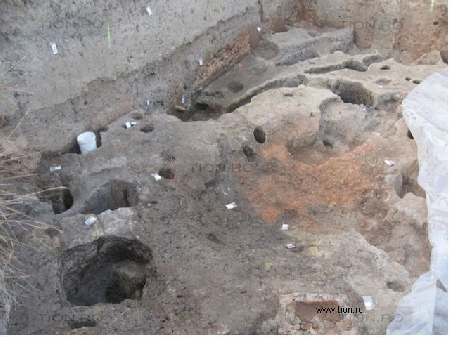The Necropolis in Paru, Timis County
The Necropolis in Paru, belonging to the Balta Sarata group, casts new light on those who belonged to that culture.

Christine Leșcu, 06.04.2013, 17:22
Last summer, construction works on the Deva-Lugoj segment of the A1 highway in western Romania produced unexpected results: the biggest necropolis belonging to a cultural group dating back to the Bronze Age was unearthed. More specifically, it is the so–called Balta Sarata group in Timis County, in the northeastern part of the Banat region.
Florin Drasovean, an archaeologist with the Banat Museum in Timisoara has further details on those important archaeological finds: “Research was carried out in Paru, near the town of Lugoj last summer. Actually, the works were not carried out on the segment of the highway, but on the belt road linking it to the town of Lugoj. We needed some time to process, from an archaeological and scientific point of view, all the materials we had discovered in more than 500 complexes in that area. I want to make it clear from the very beginning that these rescue research works have been financially supported by the Transport Ministry, which has made available funds for this research. Actually, all discoveries have been made due to the large-scale works on the highway segment in Timis County. “
The Balta Sarata group was discovered and documented as early as 2004, and this recent discovery brings, as was expected, new information on the lifestyle of those who belonged to that culture.
Archaeologist Florin Drasovean has further details: “50 incineration tombs have been discovered as well as over 20 large-sized dwellings which belong to the group that bears the name of Balta Sarata, and which can be traced back to 1600- 1200 BC. This site in Paru, is illustrative of the last stage in the evolution of that culture, more specifically between 1300 and 1200 BC. Why is this discovery so important? First of all, this is the biggest necropolis of that culture. Thanks to the recent finds, experts could prove what funeral rites of the time looked like. So far, we could only presume how they unfolded, based on other discoveries made in that geographical area. We have come to the conclusion that those belonging to this culture, used to practice incineration. The deceased was laid on a funeral table surrounded by firewood used to burn the corpse. In the meantime a funeral party was held, attended by all the friends and family of the deceased. Proof thereof are a series of pots discovered in graves where the leftovers of those parties were thrown together with bone parts and bits and pieces of the altar-table. All this was thrown into the grave. In turn, the graves were clustered according to certain criteria. We believe they were placed next to one another if the departed belonged to the same family or clan. Moreover, pottery was also found here, both in the settlement as well as inside the necropolis, proving the ties the Balta Sarata group had with the neighbouring geographical regions. There have also been documented ties with other cultures co-existing in the same period in the Middle Danube basin, in Serbia, Croatia and Hungary. Moreover, historians have also established the existence of ties with the Darla Mare culture in southern Romania”.
The pottery found together with other objects found in the necropolis in Paru, have been for the most part restored. They are now stored at the Banat Museum of Timisoara. Soon they will be put on view, and visitors will be able to find out more about the Balta Sarata culture in the monograph that is currently being written.






























